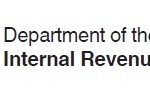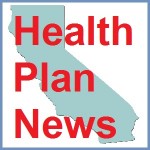Employers with 50 or more full-time employees, including full-time equivalent employees, in the previous year use Form 1095-C, Employer-Provided Health Insurance Offer and Coverage, to report the information required about offers of health coverage and enrollment in health coverage for their employees. Form 1095-C is used to report information about each employee.
1095-B Form for the IRS and tax return
Form 1095-B, Health Coverage, is used to report certain information to the IRS and to taxpayers about individuals who are covered by minimum essential coverage and therefore aren’t liable for the individual shared responsibility payment.
Obamacare Premium Assistance Repayment Limitation
If the advance credit payments are more than the amount of the premium tax credit you are allowed, you will add all or a portion of the excess advance credit payments made on your behalf to your tax liability by entering it in the ‘Tax and Credits’ section of your tax return. This will result in either a smaller refund or a larger balance due.
IRS guidance on 2016 flexible spending arrangements
FSAs provide employees a way to use tax-free dollars to pay medical expenses not covered by other health plans. Because eligible employees need to decide how much to contribute through payroll deductions before the plan year begins, many employers this fall are offering their employees the option to participate during the 2016 plan year.
Guide for Electronically Filing Affordable Care Act Information Returns for Software Developers and Transmitters
Health coverage providers and applicable large employers – and those assisting them in preparation for electronically filing the 2015 health care information returns – need to understand the IRS ACA Information Return electronic filing process. Publication 5165, Guide for Electronically Filing Affordable Care Act Information Returns for Software Developers and Transmitters, outlines the communication procedures, transmission formats, business rules and validation procedures for returns transmitted electronically through the AIR system. To develop software for use with the AIR system, software developers, transmitters, and issuers should use the guidelines provided in this publication along with the XML schemas published on IRS.gov.
How Your Income Affects Your Premium Tax Credit
You are allowed a premium tax credit only for health insurance coverage you purchase through the Marketplace for yourself or other members of your tax family. However, to be eligible for the premium tax credit, your household income must be at least 100, but no more than 400 percent of the federal poverty line for your family size. An individual who meets these income requirements must also meet other eligibility criteria.
Workforce size and employer shared responsibility
Whether an you are an applicable large employer, and are therefore subject to the employer shared responsibility provisions, depends on the size of the your workforce. The vast majority of employers fall below the workforce size threshold and, therefore, are not subject to the employer shared responsibility provisions.
IRS: What is an Applicable Large Employer?
Is an ALE member that sponsors a self-insured health plan required to file Form 1094-C and Form 1095-C if the ALE member has no full-time employees?
Anthem Blue Cross employer group reporting requirements
The Affordable Care Act (ACA or health care reform law) requires employers with at least 50 full-time workers (called Applicable Large Employers or ALEs) to offer their employees health care coverage (minimum essential coverage or MEC). Those who don’t comply may face penalties.
IRS facts on letters regarding 1095-A and tax returns
The IRS sent letters to taxpayers this summer who were issued a Form 1095-A, Health Insurance Marketplace Statement, showing that advance payments of the premium tax credit were paid on the taxpayer’s behalf in 2014. At the time, the IRS had no record that the taxpayer filed a 2014 tax return.


